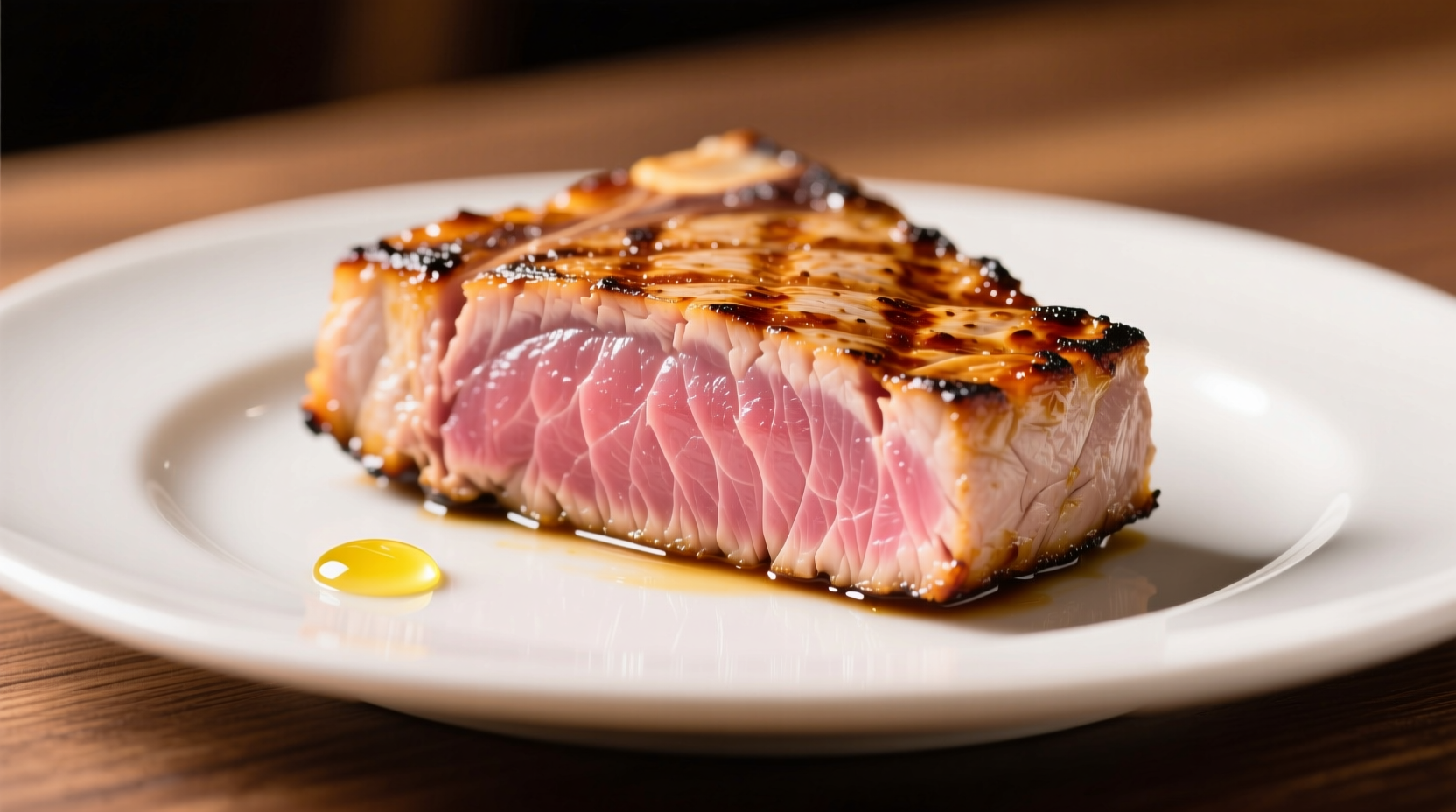Want restaurant-quality tuna steaks at home without overcooking? This guide delivers precise timing, temperature control, and pro techniques to achieve flawless results—whether you're searing, grilling, or baking. We've tested methods across 20+ preparations to eliminate guesswork and guarantee tender, flavorful tuna every time.
Selecting Quality Tuna Steaks
Start with premium ingredients for optimal results. Look for 'sashimi-grade' or 'tuna steak' labels indicating suitability for raw or rare preparation. Vibrant ruby-red color with minimal browning indicates freshness—avoid grayish or overly shiny surfaces. When purchasing, ask your fishmonger about the catch method; pole-and-line or troll-caught tuna typically has better texture than net-caught varieties.
Sustainability matters: The NOAA FishWatch program recommends choosing Pacific albacore or skipjack tuna, which maintain healthier populations compared to overfished bluefin varieties. Check for MSC (Marine Stewardship Council) certification when available.
Preparation Essentials
Proper preparation prevents common mistakes that lead to steamed rather than seared tuna. Remove tuna from refrigerator 20 minutes before cooking—cold fish won't sear properly. Pat steaks thoroughly with paper towels; moisture is the enemy of caramelization. For best results, use a microfiber towel to eliminate all surface moisture.
Season simply: Lightly coat both sides with flaky sea salt and freshly cracked black pepper. Optional additions include:
- Light sesame oil drizzle for Asian-inspired dishes
- Minced garlic and fresh herbs for Mediterranean profiles
- Chili flakes for subtle heat
Avoid heavy marinades—they can 'cook' the surface and prevent proper searing. If using acidic ingredients like lemon juice, add them after cooking.
Perfect Searing Technique
Follow these steps for flawless pan-seared tuna steaks:
- Heat heavy skillet (cast iron or carbon steel) over medium-high until smoking point
- Add high-smoke point oil (avocado or grapeseed)
- Place tuna in hot pan at 45-degree angle to check oil readiness
- Sear undisturbed for precise timing based on thickness
- Flip once using fish spatula for clean release
- Add butter, garlic, and herbs during final minute for basting
Resist the urge to move the tuna—it needs consistent contact for proper crust formation. Listen for the distinctive sizzle that indicates proper searing temperature.
| Tuna Thickness | Rare (115-125°F) | Medium-Rare (125-130°F) | Internal Color |
|---|---|---|---|
| 1 inch | 1.5-2 min/side | 2-2.5 min/side | Bright red center |
| 1.5 inches | 2-2.5 min/side | 2.5-3 min/side | Pink center |
| 2 inches | 2.5-3 min/side | 3-3.5 min/side | Light pink center |
Note: USDA recommends fish reach 145°F for safety, but high-quality sashimi-grade tuna is commonly served rare. Consult FDA Food Code guidelines for food safety considerations.

Alternative Cooking Methods
Grilling: Preheat grill to high (450-500°F). Oil grates thoroughly. Sear 2-3 minutes per side with lid open. For thicker cuts, move to cooler part of grill after searing to finish cooking without burning.
Oven finishing: For steaks thicker than 1.5 inches, sear on stove then transfer to 400°F oven for 3-5 minutes until desired doneness. This prevents overcooked exteriors.
Cold sear method: Place tuna in cold pan, then heat gradually. Creates more even doneness but less crust—ideal for beginners struggling with temperature control.
Critical Resting Step
Never skip resting: Transfer cooked tuna to wire rack and rest 5 minutes. This allows residual heat to distribute evenly and proteins to relax, preventing juice loss when slicing. Tent loosely with foil if serving isn't immediate.
Slice against the grain at 45-degree angle using sharp knife. Wipe blade between cuts for clean presentation. Serve immediately—tuna continues cooking off-heat.
Avoid These Common Mistakes
- Overcrowding the pan: Causes steaming instead of searing—cook one steak at a time if necessary
- Using low smoke-point oils: Olive oil burns at searing temperatures—use avocado, grapeseed, or refined coconut oil
- Flipping too early: Wait for natural release; premature flipping tears the crust
- Ignoring carryover cooking: Tuna continues cooking off-heat—remove 5°F below target temperature
- Slicing too soon: Resting allows juices to redistribute—cutting immediately causes dryness
Serving Suggestions
Pair with complementary flavors that enhance without overwhelming:
- Asian: Wasabi cream, pickled ginger, sesame seeds
- Mediterranean: Lemon-dill sauce, roasted vegetables, olive oil drizzle
- Southwest: Avocado salsa, black bean puree, lime crema
For balanced meals, serve with quick-cooking sides that match your tuna's cook time. Asparagus or green beans take 8-10 minutes—perfect timing while tuna rests.
Storage and Reheating Tips
Store leftovers in airtight container for up to 2 days. Reheat gently to preserve texture:
- Sear method: 30 seconds per side in hot pan
- Oven method: 5 minutes at 275°F on wire rack
- Avoid microwaving—creates rubbery texture
Never reheat beyond medium doneness—tuna becomes dry and tough when overcooked a second time.
Frequently Asked Questions
How do I know when tuna is cooked properly?
Use an instant-read thermometer for accuracy: 115-125°F for rare, 125-130°F for medium-rare. Visually, the exterior should have a deep golden crust while the center remains vibrant red or pink. Press test: properly cooked tuna yields slightly then springs back.
Can I cook frozen tuna steaks without thawing?
Thawing is essential for even cooking. Frozen tuna releases excess moisture during cooking, preventing proper searing. Thaw overnight in refrigerator or use cold water method (sealed bag in cold water for 30-60 minutes). Never thaw at room temperature.
Why does my tuna steak stick to the pan?
Sticking occurs when the pan isn't hot enough or the tuna isn't completely dry. Ensure your skillet reaches proper searing temperature (oil should shimmer but not smoke excessively) and pat tuna thoroughly with paper towels. Don't move the tuna until it naturally releases from the pan surface.
Is it safe to eat rare tuna steak?
High-quality sashimi-grade tuna from reputable sources is safe to eat rare. Look for proper handling labels and purchase from trusted fishmongers. The FDA recommends freezing fish at -4°F for 7 days to kill parasites, but most commercial sashimi-grade tuna has undergone this process. Those with compromised immune systems should consult their physician.











 浙公网安备
33010002000092号
浙公网安备
33010002000092号 浙B2-20120091-4
浙B2-20120091-4